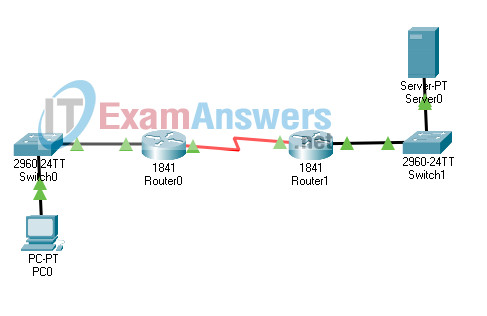1. Why is UDP well suited as the transport layer protocol for video applications?
- UDP has low overhead.
- UDP provides flow control using windows.
- UDP provides acknowledgment of received data.
- UDP provides a reliable session.
2. Which transport layer information is added to both the TCP and UDP headers?
- acknowledgment flag
- IP addresses
- window size
- port numbers
3. What type of applications are best suited for using UDP?
- applications that are sensitive to packet loss
- applications that need reliable delivery
- applications that are sensitive to delay
- applications that require retransmission of lost segments
4. What protocol header information is used at the transport layer to identify a target application?
- port number
- sequence number
- MAC address
- IP address
5. A client device has initiated a secure HTTP request to a web browser. Which well-known port address number is associated with the destination address?
- 404
- 110
- 443
- 80
6. Which number or set of numbers represents a socket?
- 01-23-45-67-89-AB
- 21
- 10.1.1.15
- 192.168.1.1:80
7. Open the PT activity. Perform the tasks in the activity instructions and then answer the question.
What is the application layer service being requested from Server0 by PC0?

- HTTP
- SMTP
- HTTPS
- FTP
- DNS
8. What information is used by TCP to reassemble and reorder received segments?
- acknowledgment numbers
- port numbers
- fragment numbers
- sequence numbers
9. What type of port number is assigned by IANA to commonly used services and applications?
- private port
- registered port
- well-known port
- dynamic port
10. Which protocol operates at the transport layer of the TCP/IP model and ensures reliable delivery of IP packets?
- TCP
- IP
- HTTP
- UDP
11. What is a characteristic of UDP?
- It provides unreliable delivery of segments.
- It establishes sessions with a three-way handshake.
- It adds 20 bytes of overhead to application layer data.
- It uses sequence numbers to reassemble segments.
12. What is the well-known port address number used by DNS to serve requests?
- 25
- 60
- 110
- 53
13. Which action is performed by a client when establishing communication with a server via the use of UDP at the transport layer?
- The client sends a synchronization segment to begin the session.
- The client sets the window size for the session.
- The client sends an ISN to the server to start the 3-way handshake.
- The client randomly selects a source port number.
